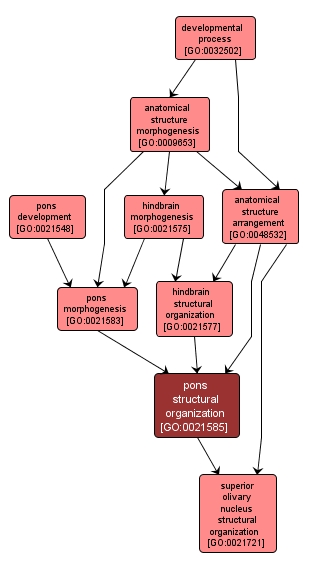| Desc: |
The process that contributes to the act of creating the structural organization of the pons. This process pertains to the physical shaping of a rudimentary structure. The pons lies above the medulla and next to the cerebellum. The pons conveys information about movement from the cerebral hemisphere to the cerebellum. |














